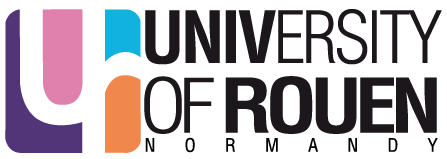Cultural Linguistics for Today’s Europe. Man, Languages, Values
Date : 27-29 juin 2016
Lieu : Université Charles, Prague (République Tchèque)
Given the way Europe is becoming more and more integrated, cultural linguistics is certainly a very relevant approach. When it comes both to exploring individual national languages and the linguistic worldviews that form within them and also when looking for unity in diversity, e. g. searching for common European values, culturally based linguistics should prove an enlightening approach. The wealth and variety of European languages and their worldviews will be explored not only within the scope of verbal-acoustic languages but also within the scope of visual-motor languages, esp. the Czech Sign Language. Leading researchers in Cultural Linguistics from six European universities (Rouen, Grenoble, Lublin, Berlin, Bratislava, Prague) will contribute to the Cultural Linguistics for Today’s Europe: Man, Languages, Values conference as well as students and academic staff of the Faculty of Arts at the Charles University in Prague, Czech Republic. The conference presentations will investigate various aspects of linguistic worldviews in particular languages as well as the research methods that are likely to be used for European scholars studying what language means for Europe.
Contact : james-william.underhill@univ-rouen.fr
Program
Monday, June 27
Morning Session
- James W. Underhill: Individuals or Peoples for Europe?
- J. Trabant: Vanishing World Views
- M. Gianninoto: Translating European concepts into Chinese. Dà gōngmín or xiǎo shìmí.
Some considerations on the terms for citizen in Mandarin Chinese
Afternoon Session: Spoken languages
1.30–3.30 pm
- Veronika Čurdová: The PATH schema in Czech somatic phraseology
• Barbora Bendíková: Kinegrams – (Non)verbal communication in Czech somatic phraseology
• Natalia Zanegina: What an elbow is for: On fragments of Russian and Czech linguistic worldview
• Veronika Vitkovská: EYE-EYES: the FUNCTION profile and its subprofiles in naive and scientific worldview
• Radka Zbořilová: Emotions in Czech somatic phraseology
• Tereza Nakaya: Poetic view of Japanese mental space KOKORO
Coffee break (30 minutes)
4.00–6.00 pm
- Lucie Šťastná: The “man–animal” opposition in language
• Anna Christou: “If the Devil Can’t Get You Any Other Way, He Sends an Old Woman.” Old woman in the traditional worldview
• Jakub Marek: City stereotypes: Czech toponyms in the cognitive ethnolinguistics perspective
• Jan Huleja: Ostrava in Czech linguistic Worldview
• Zuzana Wildová: Czechs – liver of Europe? French linguistic worldview of a Czech
Evening
Guided tour in Carolinum, the oldest building of the Charles University, and a small reception
Tuesday, June 28
Morning Session
- Alena Bohunická: Otherness from the European Identity Perspective
- Ludmila Volná: Josef Čapek’s World: Translating Dogs and Cats within Europe
- Irena Vaňková – Alena Macurová – Naďa Hynková Dingová: Man in language: spaces, stories, states of mind – experience (Spoken and sign languages)
Afternoon Session: Signed languages
1.30–3.30 pm
- Anna Moudrá: The metaphor LIFE IS PATH in Czech Sign Language
• Karla Pokorná: The CONTAINER schema and spatial orientation FROM BODY – TO BODY in Czech Sign Language
• Klára Richterová – Milan Fritz: The structuring of time in Czech Sign Language (Calendar units)
• Vladimír Šimon: Stories of the Czech Deaf (On the storytelling research)
• Barbora Gardelková: Anger in Czech Sign Language
Coffee break (30 minutes)
4.00–6.00 pm
- Lucie Břinková: Survey of ethnic stereotypes in Czech Sign Language
• Jan Šimůnek: The doctor stereotype in the perspective of the Czech Deaf
• Lenka Okrouhlíková: Animals in sign languages in the 19th century
• Andrea Hudáková – Milena Čiháková: Doggie and pussycat in the communication of Czech deaf children and their deaf parents
• Lucie Půlpánová – Romana Petráňová: Translation of biblical texts into Czech Sign Language from the cognitive perspective (Selected aspects)
Evening
Performance composed by Deaf artists
Wednesday, June 29
Morning Session
- Jerzy Bartmiński (Lublin): The cognitive definition as a method of concept explication
- Stanisława Niebrzegowska-Bartmińska (Lublin): On the profiling of concepts: issues debatable and nondebatable
Afternoon Session
Round table
Schedule as of May 27 2016.
Contacts:
james-william.underhill@univ-rouen.fr
Papers on:
- Europe
- The European Peoples
- Man and Europe
- Cultural Linguistics
- Ethnolinguistics
- Profiling
Papers in Czech, Polish, & English.
A bilingual synopsis will be provided, and English translations of the powerpoints will be sent to the other speakers one month before the event.
Cultural linguist, Linguistic Anthropologists, and Ethnnolinguists all affirm that language is central to culture and understanding. We are human beings together in language, as Wilhelm von Humboldt (1767-1935) reminds us. And as he explained language is ‘the organ of thinking and feeling’. All socialization and individualization takes place in speech and writing. Language is therefore a part of mankind and a condition for the human project. But language is also cultural in an aesthetic sense. Languages are the treasures to be cherished and protected. Europe has understood this, and knows that the riches of Europe are inseparable from its languages, its cultures and its traditions. While promoting English, Europe understands that language cannot be reduced to communication, and that promoting a single means of communication would mean a dramatic impoverishment of Europe’s culture and identity. The respect for multilingual Europe is expressed in the project A Language Rich Europe.
Nevertheless, at another level, Europe is searching for its own identity. Is there a European people? Does the EU protect and promote its peoples? Or is it not rather the case that Member States and linguistic communities often come second? The EU website and the EU laws are concerned with ‘individuals’, ‘citizens’, and ‘consumers’. But democracy must lift itself above individuals and selfish needs and desires. Democracy depends on the governance of the people, by the people, for the people. And, judging from the EU website and electronic corpora, ‘the people’ is not a major concern in Europe today in Czech, Polish, Spanish, German, French, or English.
How are we to advance with Cultural Linguistics in Europe if the idea of peoples and their languages are not held to be paramount? If linguistic communities, shared identities, shared cultures, and shared values are not held to be the central ideals of Europeans, how can they hope to survive in the Global arena? If they are not made the focus of academic study, how is the university to contribute to culture as a living and ongoing project?
Finding our way in the Europe of tomorrow, and approaching these questions as linguists, philologists, literary scholars, and cultural thinkers, is not going to prove any easy matter. Wonderful advances have been made in the field of psycholinguistics with the World Atlas of Linguistic Structures (www.wals.org), thanks to the Max Plannk Institute and Steven Levinson. Jerzy Bartmiński in Poland, Anna Wierzbicka, in Australia, and Irena Vaňková in Prague have provided exciting approaches that reinvigorate the Humboldtian project to investigate languages as worldviews. In Rouen and in Berlin the questions of how human kind evolves in language and how individuals take a stance in speech are major concerns. In the United States, and around the world, neowhorfian scholars and cognitive linguists open the door to such questions, and provide paradigms for comparing languages, and modes of thinking. The Metaphor theory of Lakoff and Johnson, and Turner and Fauconnier, and the Cultural Linguistics of Gary Palmer are only a few examples of the waves of contemporary scholars that are getting to grips with fundamental questions related to speech, language, translation, and cognition.
And yet, the sources of inspiration, the conceptual tools, and even the objectives of such schools and scholars are often very different. Often, even well-meaning specialists misunderstand and misrepresent the principles, and objectives of alternative approaches. There is no one single Cultural Linguistics, just as there is no one single language. Just as a language cannot be reduced to a single individual, no scholar or school has a monopoly on ethnolinguistic investigations. We all have our limits as individuals and schools of thought. At best, even what we know about our own mother tongue is fragmentary and insufficient. And how many of us perfectly ‘master’ the languages we study?
Irena Vaňková and Ladislav Janovec of the Charles University, and James W. Underhill, of the Rouen Ethnolinguistics Project invite speakers to discuss these questions: questions we believe will prove to be essential in the debates on culture, and language teaching over the coming decades. Researchers will come together to share their insights and juxtapose their fragmentary perceptions of what it means to think about thinking-in-language. And it is hoped that this will help us build a more lucid conception of the Language Rich Europe of Tomorrow. Perhaps this will help us provide the Cultural Linguistics that the European peoples deserve.
Ongoing Ethnolinguistic Projects
This project is a part of the ongoing series of international multilingual workshops and conferences organized by the Rouen Ethnolinguistics Project, of Rouen University, The Charles University, Prague, The Berlin Academy, and the Marie Curie University, of Lublin, Poland in collaboration with other European Universities and Institutions.
This conference may be filmed and put online on the websites of the partner-universities. It many also form the beginning of a partnership for a jointly published academic book of 150-180 pages to be published in English by the Normandy University Publishers Press, the PURH.

